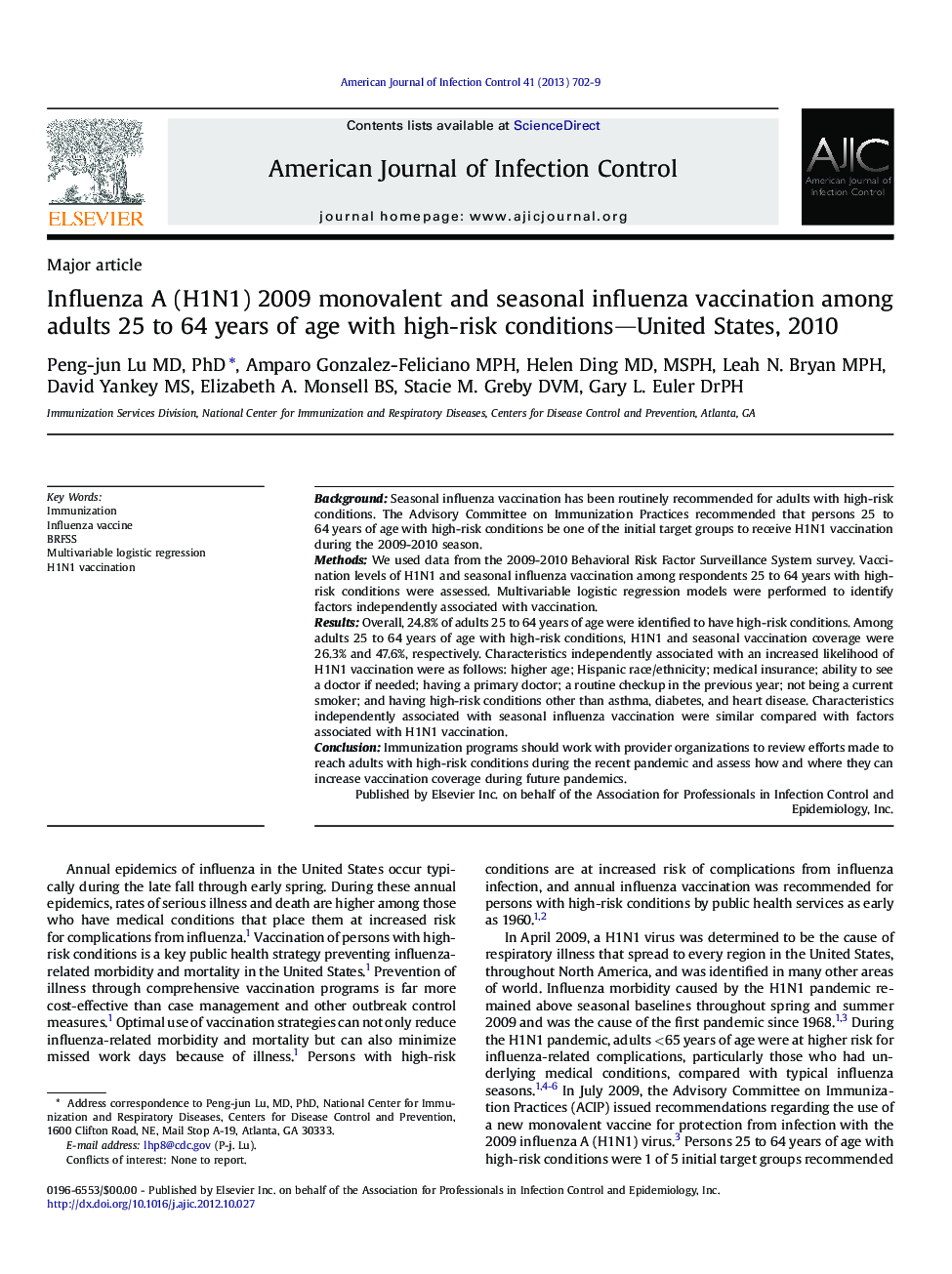| Article ID | Journal | Published Year | Pages | File Type |
|---|---|---|---|---|
| 2637776 | American Journal of Infection Control | 2013 | 8 Pages |
BackgroundSeasonal influenza vaccination has been routinely recommended for adults with high-risk conditions. The Advisory Committee on Immunization Practices recommended that persons 25 to 64 years of age with high-risk conditions be one of the initial target groups to receive H1N1 vaccination during the 2009-2010 season.MethodsWe used data from the 2009-2010 Behavioral Risk Factor Surveillance System survey. Vaccination levels of H1N1 and seasonal influenza vaccination among respondents 25 to 64 years with high-risk conditions were assessed. Multivariable logistic regression models were performed to identify factors independently associated with vaccination.ResultsOverall, 24.8% of adults 25 to 64 years of age were identified to have high-risk conditions. Among adults 25 to 64 years of age with high-risk conditions, H1N1 and seasonal vaccination coverage were 26.3% and 47.6%, respectively. Characteristics independently associated with an increased likelihood of H1N1 vaccination were as follows: higher age; Hispanic race/ethnicity; medical insurance; ability to see a doctor if needed; having a primary doctor; a routine checkup in the previous year; not being a current smoker; and having high-risk conditions other than asthma, diabetes, and heart disease. Characteristics independently associated with seasonal influenza vaccination were similar compared with factors associated with H1N1 vaccination.ConclusionImmunization programs should work with provider organizations to review efforts made to reach adults with high-risk conditions during the recent pandemic and assess how and where they can increase vaccination coverage during future pandemics.
